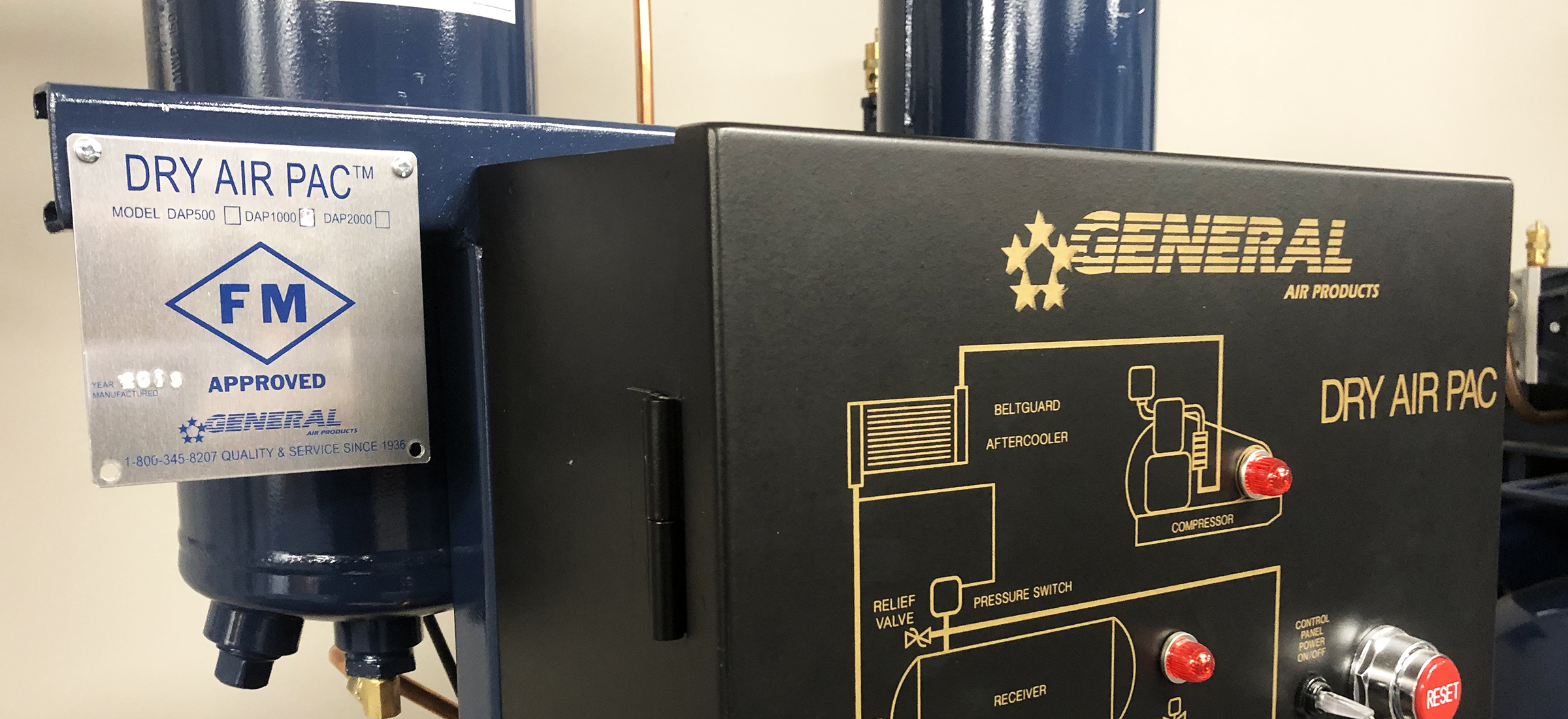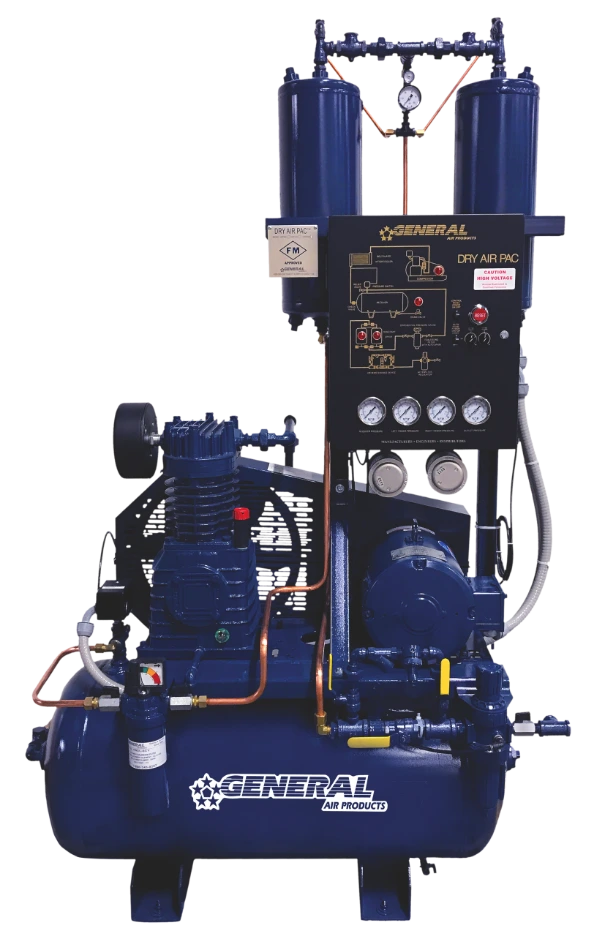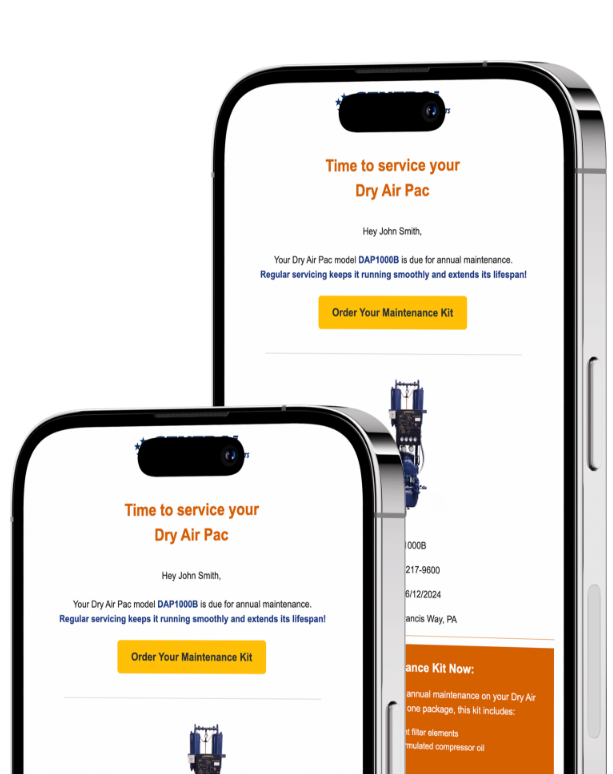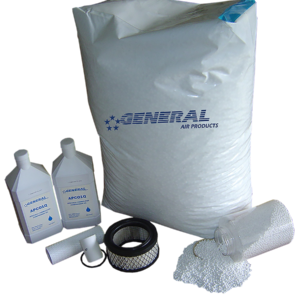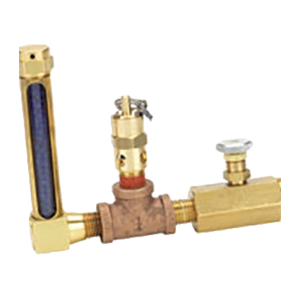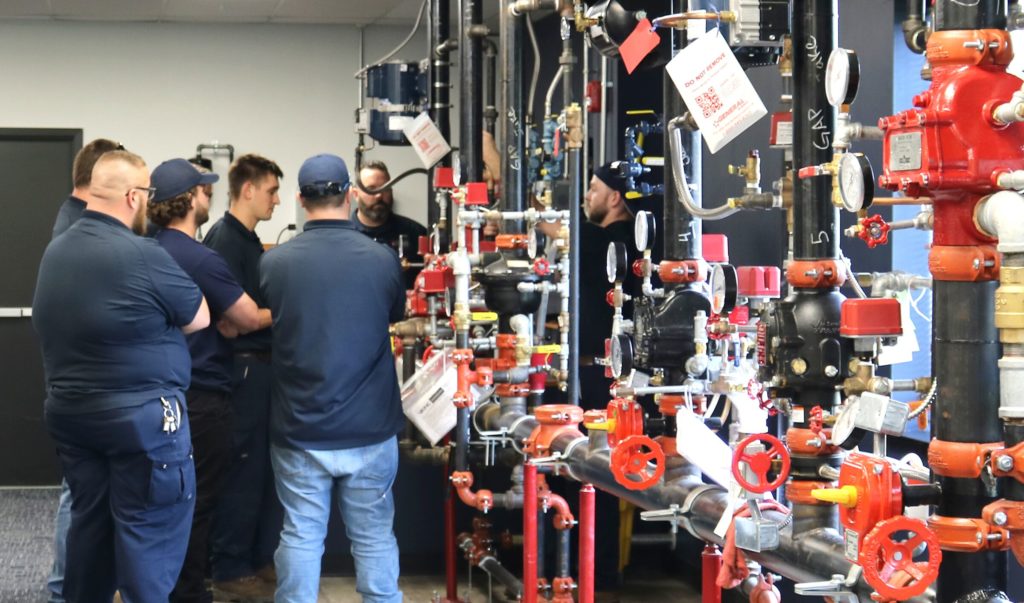The Best Air Supply For Cold Storage Sprinkler Systems & Applications Where Moisture Removal Is Essential
General’s DAP Series Dry Air Pac® is a FM Approved, twin tower regenerative dryer / compressor package designed for the fire sprinkler industry. This turnkey package provides moisture free air, assuring that there are no ice plugs in freezer room applications and that corrosion is significantly reduced in any dry or pre-action sprinkler system.
Lead Time: 5 weeks to ship
For large orders & exact lead times, please consult factory.
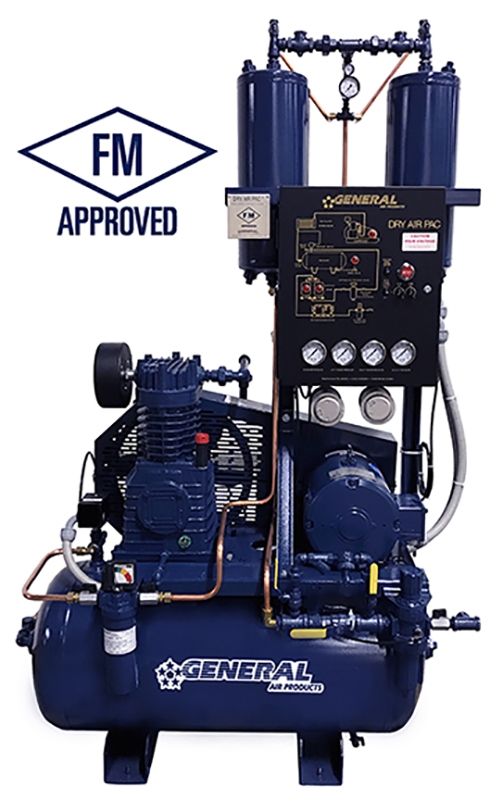
Model Number | System Capacity (gal.) | Order Maintenance Kit | Engineering Submittal Package | Wiring Guide | Cut Sheet |
|---|---|---|---|---|---|
500 | |||||
500 | |||||
1000 | |||||
2000 |
Click on the model numbers to find additional product information and to order maintenance kits
Additional Downloads
Advantages of Dry Air
The Dry Air Pac® has been the sprinkler industry’s benchmark for nearly 30 years in cold storage, freezer room facilities and other installations where moisture removal is essential. Dry air has long been utilized to prevent ice plugs from forming and in the same process reducing pipe corrosion significantly.
By bringing the pressure dew point of the air inside of the sprinkler piping system down to a -40 degree F dew point (note that this is a moisture measurement, not the temperature inside the pipe) moisture is removed from the compressed air supplying the sprinkler system and the process of oxidation is being controlled. In short, this means no ice plugs and significant corrosion protection.
How Does it Work?
Everything starts with the air compressor – be it dry air or nitrogen. The air compressor on the Dry Air Pac® is designed to fill the sprinkler system with -40 to -60 degree F dew point air in 30 minutes in accordance with NFPA 13 standards, as well as provide the pressure needed to allow the air dryer to function properly.
Prior to entering the desiccant beds, an air-cooled aftercooler cools the compressor’s hot discharge air. A coalescing pre-filter with differential pressure gauge removes oil vapor and other contaminants that can destroy the desiccant in the dryer towers. A combination particulate filter and regulator prevents downstream migration of desiccant dust while regulating air pressure to the sprinkler system.
The super-absorbent desiccant and the accompanying filters ensure that the compressed air entering the piping network is dried to a -40°F to -60°F Dew Point. Up to -100°F Dew Point is achievable.
At this point the compressed air is dry and it will not introduce moisture into the sprinkler system – this is how the Dry Air Pac® has been used effectively to prevent ice plugs in systems where freezing temperatures come into play, i.e. freezer rooms.
When the dry air enters the sprinkler pipe it “picks up” any residual moisture inside the pipe. Water molecules are removed as the compressed air escapes either through a purge or naturally from leaks in the piping network. By removing moisture from the air in the pipe, the electrolyte required to complete the process of oxidation is eliminated and corrosion is slowed substantially.
This air drying technique has been used in other industries for some time. In the food and pharmaceutical industries it is vital to keep process lines clear of contaminants like those produced via corrosion as they will directly and immediately effect product. These industries operate under the principle that a pressure dew point of -15 degrees F will not only virtually stop corrosion, it will also inhibit the growth of micro-organisms.
What’s Included with a Dry Air Pac®?
All components are pre-piped, pre-tested, and pre-wired for ease of mechanical and electrical installation on site. Each unit comes sized to fill a dry or pre-action sprinkler system to 40 psi in 30 minutes as per NFPA code, all pre-filters are included and pressure switches / pressure regulators preset to industry standards. Every Dry Air Pac® also includes a UL Listed, FM Approved Air Maintenance Device, compressor oil and vibration isolators.
Did You Know? The FM Approval on the Dry Air Pac® eliminates the requirement to connect the air intake to the freezer room. NFPA 13 exempts any approved packages from this costly requirement.
Click here to learn more about the Dry Air Pac maintenance schedule and maintenance kits.
